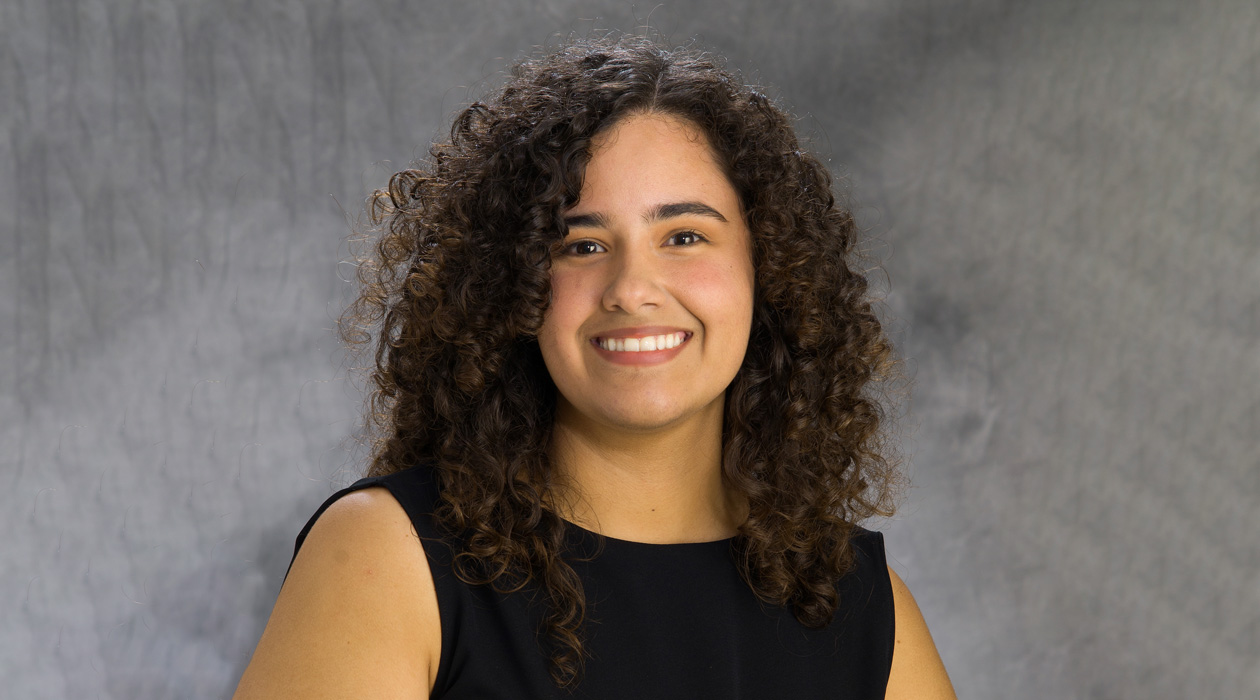IGB Profile: Génesis Ríos-Adorno

“There is a very popular saying in my town: ‘Siempre para adelante, para atrás ni para tomar impulso’, which I think about when research gets hard and stressful. It means to always go forward and never give up.” / Photo provided by Génesis Ríos-Adorno
A defining feature of scientific inquiry is that it draws from the knowledge and experience of researchers from different backgrounds. Science belongs to everyone, whether you hail from a buzzing metropolis or, like Génesis Ríos-Adorno, a Caribbean island.
Growing up in Arecibo, Puerto Rico, Rios-Adorno discovered her interest in engineering. She studied at the University of Puerto Rico at Arecibo for two years and then switched to the University of Puerto at Mayagüez. “It was the only public engineering college available at the time. I tried different disciplines before settling on chemical engineering,” Ríos-Adorno said.
An internship in the chemical engineering department at the University of Florida, Gainesville, however, cemented her interest in biology and inspired her to pursue her PhD in chemical and biomolecular engineering. “Science is very broad, and you can choose whatever interests you,” Ríos-Adorno said. “My parents and grandparents have a lot of health issues and coming into the biomaterials field, I realized that there were many solutions that had not been explored in medicine and surgery.”
Ríos-Adorno chose to start her research journey at the University of Illinois Urbana-Champaign because of its vibrant community. “There were a lot of resources here and it was important for me to have a community that was welcoming,” Ríos-Adorno said. “Although it’s very different from my hometown that has forests and mountains, I knew that I was going to be in a place where I felt accepted.”
Even so, Ríos-Adorno initially struggled in her first few years at Illinois. “Since my first language is Spanish, I learned all the engineering concepts in Spanish. When I went to classes here, I had to get used to the language while trying to learn everything. Reading textbooks in English is a very different experience compared to listening to it in class,” she said. “I also had to get used to people that didn’t really accept me. Although it was sad, I kept going.”
Ríos-Adorno works in the Harley (RBTE leader/EIRH) lab where she focuses on creating biomaterials for musculoskeletal tissues. Using 3D printing techniques, she tries to mimic tissues that are at the interface of bones and tendons with the goal of treating disorders like rotator cuff tears.
“Although it is difficult, I think it’s cool to incorporate two different materials together—one that is squishy versus one that is flowy. The easiest way to think about it is to compare it to a donut. The cooked dough is spongy and you're trying to fill it with jam in different places,” she explained.
In her spare time, Ríos-Adorno tries to inspire other Spanish-speaking students who are interested in science. She volunteers with Cena y Ciencias, which is a scientific outreach program in the bilingual community of the Urbana Public School District.
“It’s been fun to work with the kids and learning from them. I remember the first activity I did with them was using Lego to build molecules,” Ríos-Adorno smiled. “They got very creative and the whole table started combining their Lego blocks and created a big dog. It was very cute.”
Ríos-Adorno believes that scientists from different backgrounds are needed to solve important problems. “Science is big, broad, and fun! Although it is hard and you will make mistakes, it’s okay because you are learning. My advice for aspiring researchers is to embrace the challenge and keep going!”
